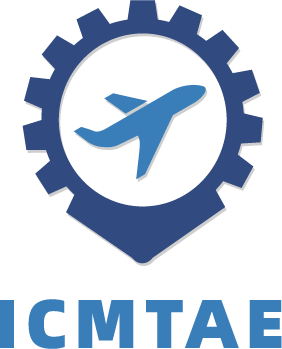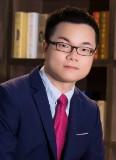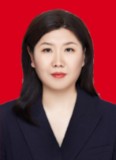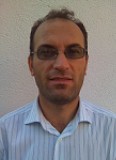
Keynote Speakers
Prof. Yan Wang
Nanjing University of Aeronautics and Astronautics, China

Biography: Prof. Yan Wang, National Youth Specially-appointed Expert (priority funding), Jiangsu Province Innovation and Entrepreneurship Talent, and the school's "Changkong Talent". Mainly engaged in the research of computational fluid dynamics method and its application, aircraft flow reduction and optimization design, multiphase flow, fluid-structure coupling, intelligent flow control, etc. He has published more than 50 SCI papers, co-published an English monograph, and 3 papers were selected as ESI highly cited papers. He has presided the National Numerical Wind Tunnel Project, the National Natural Science Foundation of China, the Natural Science Foundation of Jiangsu Province, and the National Key Laboratory Project. Prof. Wang is also a senior member of the Chinese Aeronautical Society, a member of the Youth Committee of the Renewable Energy Society, a dissertation review expert of the Academic Degrees Center of the Ministry of Education; guest editor of Physics of Fluids and Applied Science; a member of the youth editorial board of China Southern Airlines Journal.
Assoc. Prof. Jiuming Xie
Tianjin Sino-German Universities of Applied Sciences-Mechanical Engineering College, China

Title: Preparation and Mechanical Properties of Aluminum Alloy 5A02/CFRTP Laminates
Abstract: Aerospace and military defense fields are posing higher requirement on the lightweight feature of structures. Subject of this study is the Aluminum Alloy 5A02 /CFRTP (Carbon Fiber Reinforced Thermo-Plastic) laminates. In the paper, aluminum alloy was anodized, compression molding and 3D printing were adopted to prepare Carbon Reinforced Aluminum Laminates (CARALL) with two different structures: the solid core structure and the honeycomb structure, and the prepared specimens were then tested for mechanical properties via tensile test and three-point bending test, and compared with the performance of the conventional aluminum alloy. The results show that under the condition of a same thickness, the tensile strength of CARALL specimens with the molded solid core structure and the 3D printed honeycomb structure reaches 256Mpa and 186MPa, respectively, which is 85.5% and 34.8% higher than that of the tensile strength of Al 5A02; under different bending modes, the maximum bending strength is 682Mpa and 525Mpa, respectively, which is 62.4% and 25.5% higher than that of Al 5A02. When the specimens are subject to tensile force, the separation of the metal layer and the fiber layer is the primary failure form, the fiber layer fractures, and the metal layer exhibits the necking phenomenon as the metal fibers are being pulled out. During the bending process, for different bending forms, there’re great differences in the bending strength of CARALL specimens prepared by the same method, the failure modes of the specimens vary greatly as well, and this is determined by the tensile strength of the carbon fiber layer and the tensile strength of AL 5A02. Enhancing the bonding strength between the metal layer and the fiber layer can improve the mechanical properties of CARALL. These research findings can provide a reference for the lightweight design of metals and Fiber Metal Laminates (FML).
Research Interest:
(1) material forming process and computer simulation
(2) Topology optimization of composite structure
Prof. Alam Md. Mahbub
Shenzhen Graduate School, Harbin Institute of Technology (Shenzhen), Bangladesh

Title: Energy Harvesting from Free vibrations of Structures
Abstract: Renewable energy harvesting rapidly increases because of the recent research focus on the ocean and wind energy. The ocean occupies 70% of the earth’s surface, and water is 1000 times heavier than air. This abundance and high density of water make it superior for power generation capability over air. The ocean energy is present in two forms, i.e., waves in the vertical direction and currents in the horizontal direction. While the former is seasonal or dependent on weather, the latter is persistent. Energy can be harnessed continuously from horizontal currents by employing alternating lift force technologies. Fluid flow over structures (i.e., foils, circular, square, rectangular cylinders) produce alternating lift force due to complex fluid-structure interactions. The lift force generates vibration of the structure. Flow-induced vibration (FIV) involves different phenomena such as vortex-induced and galloping vibrations. The kinetic energy of a violently vibrating structure or structures can be converted into electricity, running a generator. This lecture will encompass energy harvesting from (ii) galloping vibrations of two circular cylinders of different diameters, casting light upon the mechanisms behind the galloping vibration and its sustainability, and (ii) free oscillation of an inverted foil.
Biography: He is the author of two books and 18 chapters in books. He has edited four special issues in ‘Wind and Structures, an International Journal’ and a conference proceeding published in Research publishing, Singapore. He has delivered 24 Keynote speeches at international conferences. His research has mostly involved flow-induced vibrations, flow-induced noise, turbulent wake behind bluff bodies, wind load on structures, fluid-structure interactions, hydrodynamics of swimming animals, flow control, and energy harvesting from wind and ocean current. He has secured a total of RMB11 million research funding from national and international levels.
Prof. Naim L Braha
University of Prishtina, Kosovo

Biography: Prof. Naim L. Braha has been working as a full professor in University of Prishtina since 2016.His subjects mainly include Mathematical analysis, functional analysis, real analysis, basic statistics, data analysis, mathematics for economy.The filed of interest:Banach Spaces; Operator Theory; Approximation Theory, Summability theory, Classical Fourier Analysis; Statistical convergences, Korovkin type theorems, Tauberian type theorems.Reviewer – Mathematical Reviews, USA.